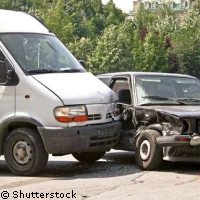Project develops car-safety technology
Imagine driving down the motorway, when suddenly a car swerves dangerously out of its lane and heads straight in the direction of your car. Sensing an imminent collision, your car takes measures to protect you from a life-threatening crash. This technology is not science fiction, but will soon find its way to a car showroom near you. Over 40,000 people are killed every year on the roads in the EU, that amounts to a whole town being wiped out every year. And when it comes to injuries as a result of road accidents, the numbers reach a staggering 1.7 million a year. These numbers are unacceptable by any standard and the EU has committed itself to reducing them by half by 2010. For this reason, the EU is actively supporting measures aimed at reducing road accidents. Just one of these EU-sponsored projects promises to revolutionise the way we drive and how we think about safety. The Advanced Protection Systems (APROSYS ) project is developing a car body that transforms an average car into an intelligent vehicle that can actively think and protect its occupants in the crucial moments just prior to or during a crash. The system will decide if there is a collision risk with another car 200 milliseconds before impact and can survey an area of 20-metre range around the car. The technology was developed by a team of researchers working across Europe. 'Our goal was to improve the active crash safety of motor vehicles - that is, to adapt the technical properties of the car body in such a way that it absorbs energy at the crucial moment and thus protects the occupants,' says Björn Seipel of the Fraunhofer Institute for Structural Durability and System Reliability LBF, who is managing the project. According to the researchers, the system developed acts as a kind of sixth sense which is able to anticipate accidents and then activate the side-impact protection system. The stereo cameras and radar sensors continually scan the environment, and a central computer analyzes the data. 'During the journey, the system has to distinguish moving objects - meaning other cars that could potentially cause an accident - from stationary objects such as houses or trees,' explains Dr Dieter Willersinn of the Fraunhofer Institute for Information and Data Processing IITB., who is also involved in the project.? In addition to developing the appropriate computer software, the system also utilises the latest in shape memory alloys, which remember their shape. When the computer software senses danger, it sends a command to heat the shape memory alloy. The alloy in turn immediately triggers a spring which slackens and pushes a steel bolt, which is integrated in the car seat, by the door. At the same time a stable metal body in the door is brought into position to support the steel bolt. 'The system of the bolt and the metal box stabilizes the car door and absorbs energy on collision,' explains Mr Seipel. 'We opted for this solution because it is faster than any conventional solenoid switch.'



